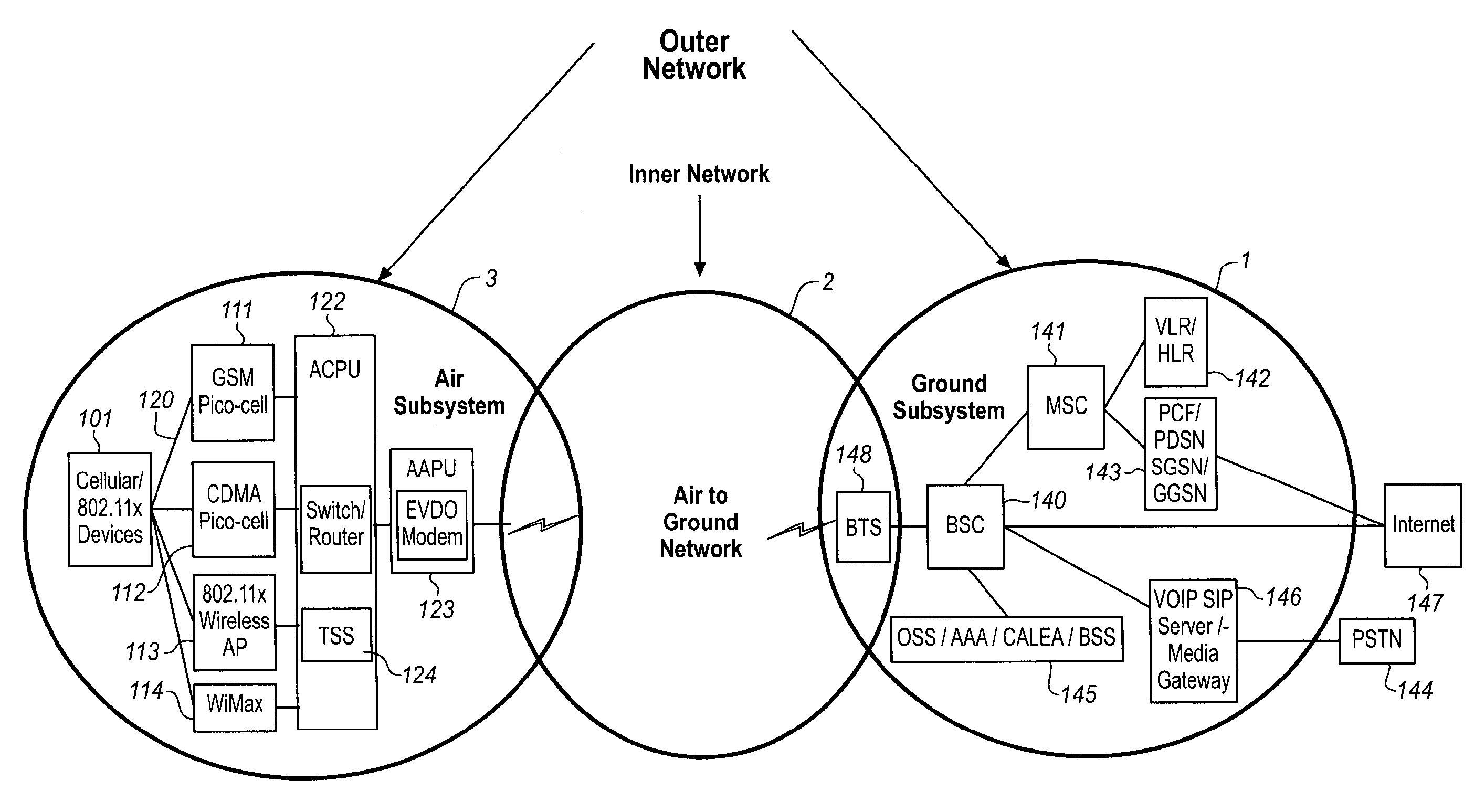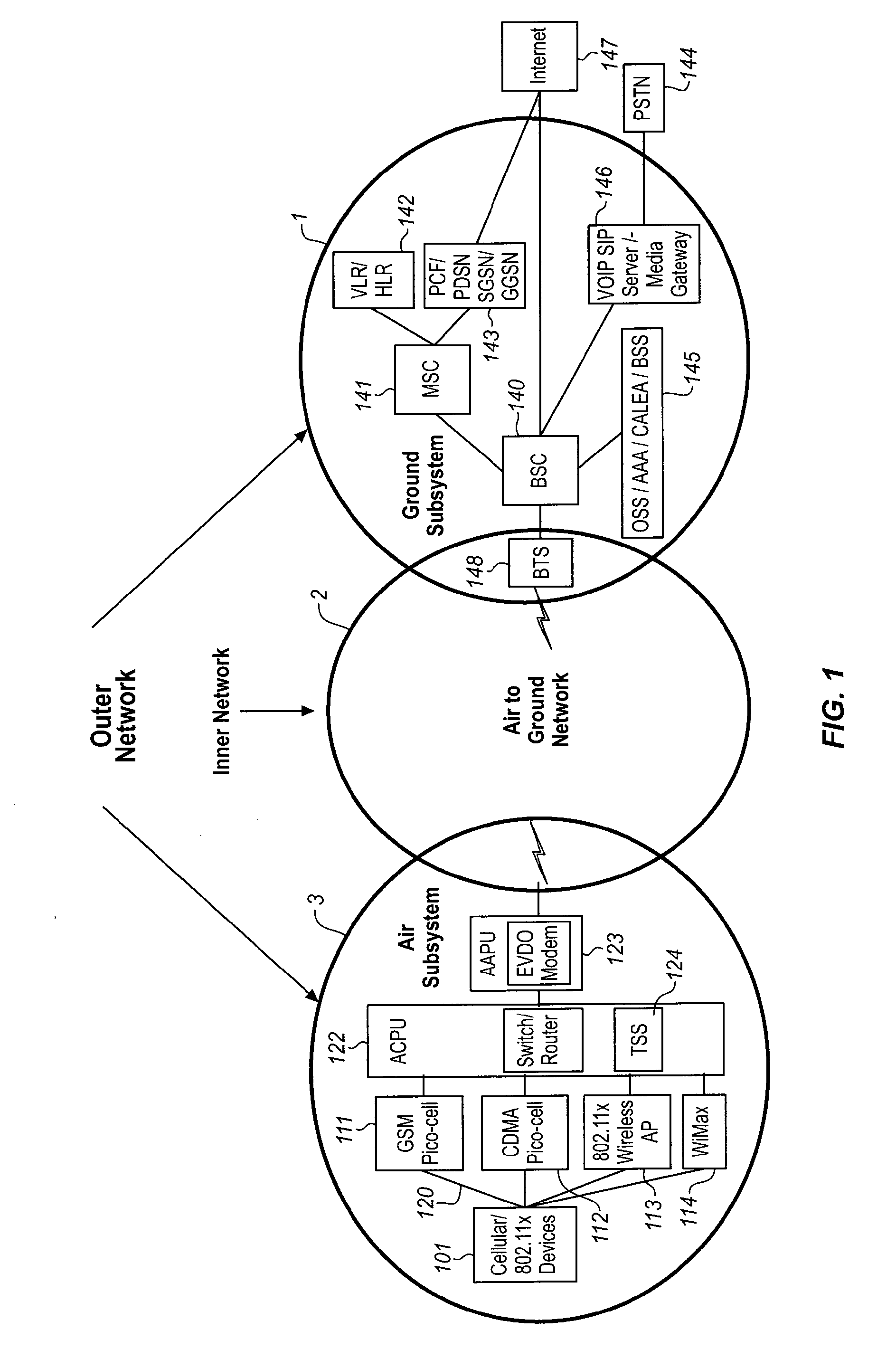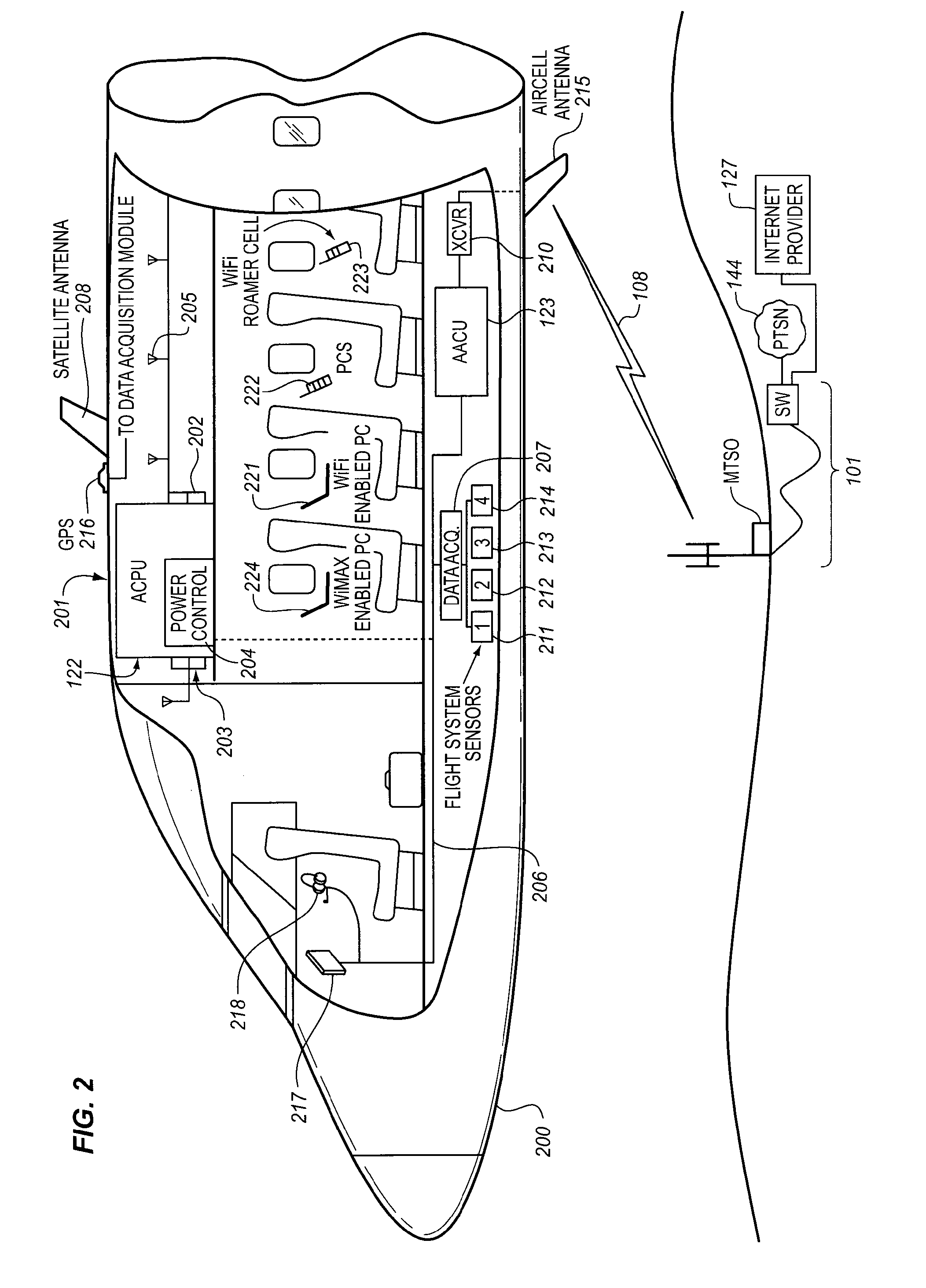Traffic scheduling system for wireless communications
a traffic scheduling and wireless communication technology, applied in the field of traffic scheduling systems for airtoground communications, can solve the problems of high bandwidth applications disrupting the near real-time applications of other passengers, affecting the reliability of network-based systems, so as to achieve low latency and/or bandwidth, optimize or guarantee performance, and/or the effect of bandwidth
- Summary
- Abstract
- Description
- Claims
- Application Information
AI Technical Summary
Benefits of technology
Problems solved by technology
Method used
Image
Examples
Embodiment Construction
Overall System Architecture
[0019]FIG. 1 illustrates, in block diagram form, the overall architecture of the non-terrestrial communication network, which includes an Air-To-Ground Network 2 (Inner Network) that interconnects the two elements of an Outer Network, comprising an Air Subsystem 3 and Ground Subsystem 1. This diagram illustrates the basic concepts of the non-terrestrial communication network and, for the purpose of simplicity of illustration, does not comprise all of the elements found in a typical non-terrestrial communication network. The fundamental elements disclosed in FIG. 1 provide a teaching of the interrelationship of the various elements which are used to implement a non-terrestrial communication network to provide content to passenger wireless devices which are located in an aircraft. This is accomplished by the Air-To-Ground Network 2 transmitting both the passenger communication traffic (comprising voice and / or other data) and control information between the A...
PUM
 Login to View More
Login to View More Abstract
Description
Claims
Application Information
 Login to View More
Login to View More - R&D
- Intellectual Property
- Life Sciences
- Materials
- Tech Scout
- Unparalleled Data Quality
- Higher Quality Content
- 60% Fewer Hallucinations
Browse by: Latest US Patents, China's latest patents, Technical Efficacy Thesaurus, Application Domain, Technology Topic, Popular Technical Reports.
© 2025 PatSnap. All rights reserved.Legal|Privacy policy|Modern Slavery Act Transparency Statement|Sitemap|About US| Contact US: help@patsnap.com



